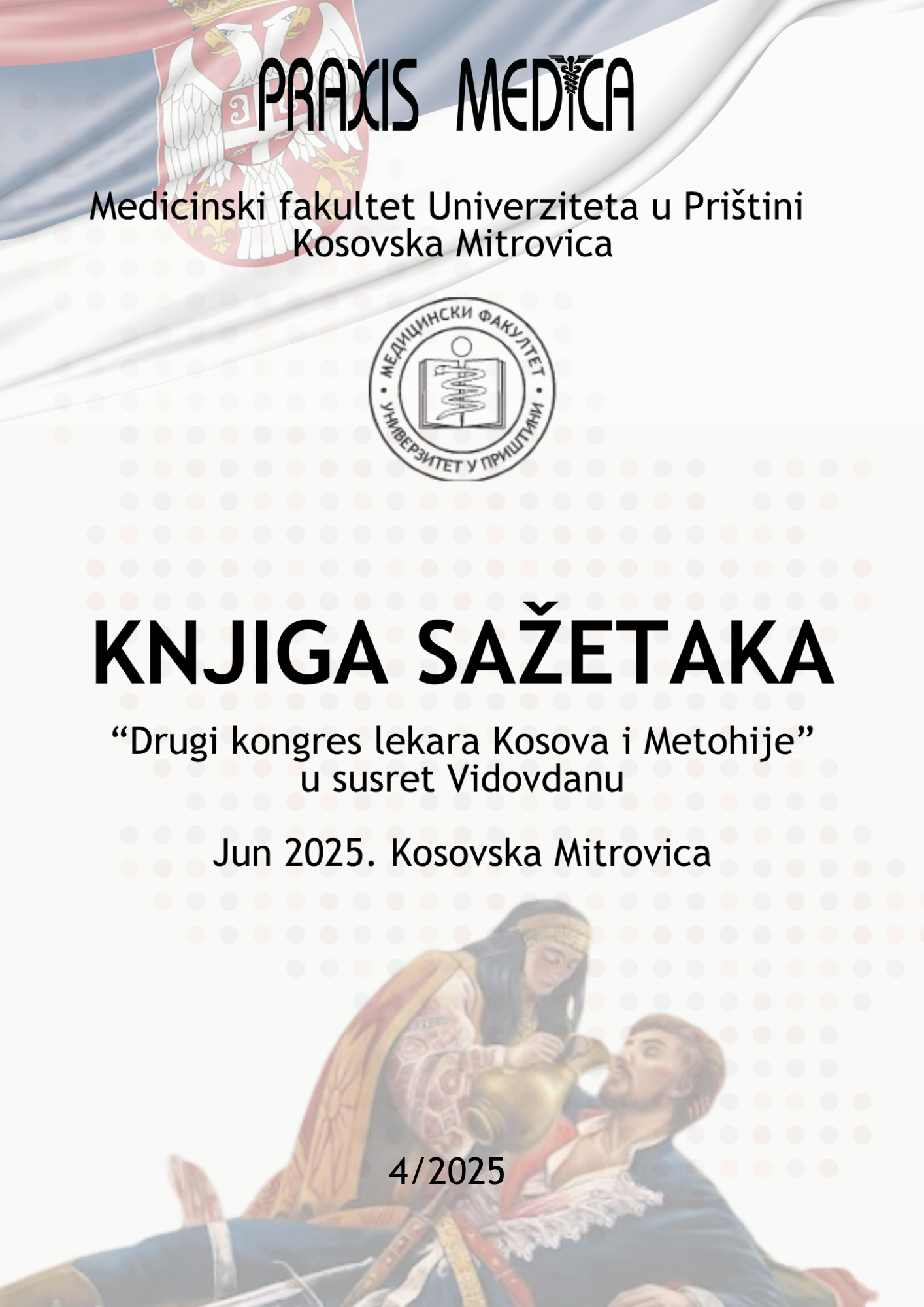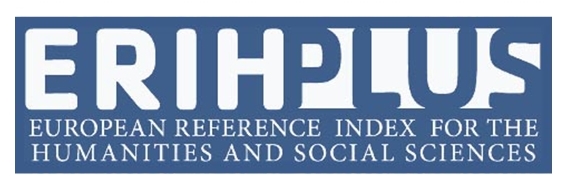Current issue

Volume 53, Issue 4, 2025
Online ISSN: 2560-3310
ISSN: 0350-8773
Volume 53 , Issue 4, (2025)
Published: 30.06.2025.
Open Access
All issues
Contents
30.06.2025.
Professional paper
IMEDIJATNO LEČENJE AKUTNIH TRAUMATSKIH POVREDA ZUBA KOD DECE NA FIKSNOJ ORTODONTSKOJ TERAPIJI
Uvod: Svako peto dete doživi traumatsku povredu zuba (TPZ) u nekom trenutku svog života. Iskustvo nam govori da se značajan broj dece suoči sa
traumom za vreme ortodontske terapije.
Očuvanje traumatizovanih zuba je složen zadatak, a zbrinjavanje povreda kod ortodontskih pacijenata predstavlja dodatni izazov zbog mogućeg
uticaja ortodontskog aparata na vrstu i obim nastalih povreda; potencijalnog sumiranja bioloških efekata ortodontske terapije i novonastalog
oštećenja uzrokovanog traumom te rizika koje sa sobom nosi eventualni nastavak ortodontskog lečenja.
Glavni deo: Konvencionalne smernice za lečenje traumatskih povreda zuba ne mogu se primeniti na sve slučajeve. Većina TPZ koje se javljaju u
vreme ortodontskog lečenja zahteva individualni, multidisciplinarni plan terapije prilagođen rešavanju bioloških, funkcionalnih, estetskih i drugih
izazova koji se postavljaju pred kliničara.
Prezentacija daje sažet pregled koraka koji su uključeni u neposredno lečenje akutnih traumatskih povreda zuba (TDI) kod dece koja su podvrgnuta
aktivnom ortodontskom lečenju, sa ciljem postizanja povoljnog terapijskog rezultata.
Uspešno zbrinjavanje TPZ je moguće uz sveobuhvatnu procenu kliničkih i radiografskih pokazatelja vrste i težine povrede što će usmeriti
prilagođavanje plana terapije njihovim specifičnostima i odgovarajuću modifikaciju ortodontskog lečenja. Ishod primenjene terapije neophodno je
periodično pratiti, nastavak ortodontskog tretmana odložiti u zavisnosti od težine i vrste TPZ, a kada se tretman nastavi silu ortodontskog pomeranja
pažljivo dozirati. Shodno tome, važno je da dečji stomatolog blagovremeno dostavi ortodontu sve relevantne informacije u vezi sa TPZ što će
doprineti postizanju optimalnih rezultata lečenja u najboljem interesu pacijenta.
Zaključak: Cilj prezentacije je da doprinese pragmatičnom rešavanju kompleksnog problema lečenja akutnih traumatskih povreda kod dece na fiksnoj
ortodontskoj terapiji i da istakne značaj koordinisanog i fleksibilnog terapijskog plana prilagođenog individualnim potrebama pacijenta, kontinuirane
procene stanja povređenih zuba i adaptacije budućeg nastavka terapije.
Ključne reči: povrede zuba, traume zuba, ortodontska terapija, smernice za lečenje.
Ivana Stošović Kalezić, Sanja Simić, Andrijana Cvetković
15.01.2025.
Professional paper
IMPACTED MAXILLARY CENTRAL INCISORS WITH SUPERNUMERARY TOOTH - CASE REPORT
Introduction:
Presence mesiodens is not uncommon in clinic practice. It is cause of impacted permanent maxillary central incisors. Diagnosis of the delayed tooth is usually made on the basis of clinical and radiographic findings. The treatment include surgical exposure of the impacted maxillary central incisors and extraction of supernumerary tooth, because it is a direct obstruction for the eruption of maxillary central incisors. Impacted maxillary central incisors is moved into it's proper position with orthodontic traction. The aim is presented surgical-orthodontic treatment of impacted teeth, which is necessary to achieve stability esthetic and functional results.
Case report:
This case report describes a surgical-orthodontic treatment of 9.5-old boy with both impacted permanent maxillary central incisors with supernumerary tooth which disturbs their normal eruption.
Conclusion:
The gnathometric evaluation of spaces in dental arch, the assessment of dental age and radiographic analysis are preconditions of successful therapy. The impacted maxillary central incisors were successfully positioned in the maxillary arch, with an adequate width of attached gingiva. The careful and persuasive treatment planning of an orthodontist, oral surgeon and periodontist are the key to success in resolving such cases.
Sanja Simić, Branko Mihailović, Jasna Pavlović, Amila Vujačić, Vladanka Vukićević, Jelena Stanišić Zindović, Zoran Arsić
01.12.2019.
Professional paper
The frequency of bucal and palatal impaction maxillary canines
Introduction: Maxillary canines are usually impacted teeth the second after third molar. Frequency of impacted maxillary canines is about 1 to 3% of population (in 85% of the cases palataly, and in 15% of the cases bucaly). The aim of this research was to find the frequency of bucal and palatal impacted maxillary canines in relation to sex and position of impacted tooth. Matherial and method: We analyzed three-dimensional computed tomography images (CBCT) of 64 examinees (aged 12 to 33 years) with 80 unerupted maxillary canines to plan the orthodontic therapy. Results: Among 64 examines with impactions, 80 impacted maxillary canines are diagnosed. The average age of all respondents in the survey is 16,3±4,3. Of 64 examinees in research 41(64.1%) were female which is significantly more important than the representation of male examinees whose number was 23(35.9%). Frequency of unilateral impactions of maxillary canines is three times higher 48 (75%) in comparison to bilateral impactions 16 (25%). Of total 80 impacted maxillary canines 19 (23.75%) were bucal impacted, 3 (2.75%) in the middle of alveolus and 58 (72.5%) palatally. With the bucal and palatal impaction usually was represented partially vertical impaction (70%); completely horizontal impaction (10%) was represented only in the palatal impaction. Conclusion: The analysis of CBCT images of maxilla shows a statistically significant frequency of partially vertical, unilateral and paltally localized impacted maxillary canines.
Sanja Simić, Jasna Pavlović, Vladanka Vukićević, Amila Vujačić
01.12.2017.
Professional paper
Precision of Moyers table values of predicting C-P2 segment applicable to our population
Introduction: One of the basic tasks of the orthodontist is to establish a proper dental array, to provide a favorable mastication function and an adequate appearance of the maxillofacial complex.Aim: The aim of this paper was to determine whether the values obtained from Moyers' tablets within the 75% probability correspond to the values the width of the side segment measured on our population. Subjects and method: The study included 60 people with a constant dentition of age from 15 to 18 years (30 men and 30 women). Results: The total tooth width of the side segment in the upper and lower jaw obtained from Moyers's analysis is significantly higher than Our findings, regardless of gender, with an average of about 1mm. Conclusion: We have defined the new regression equations for calculating the size of the C-P2 segment for the upper and lower jaws especially for men and especially for females.
Amila Vujačić, Vladanka Vukićević, Sanja Simić
01.06.2016.
Professional paper
Orthodontics treatment open byte with fixed Damon technique
The complexity of the open bite is attributed to the combination of the skeletal, dental and soft tissue elements. Depending on the etiology there are different approaches in their solution from conventional to surgical orthodontic treatment. In boys, aged 15 years, was found anterior open bite. After diagnostic procedures and growth assessment, the Demon nonsurgical orthodontic treatment technique was performed. The use of mild force, low friction and early use of intraoral elastics, arterior vertikal and class II in the area of the side teeth, have enabled us to take advantage of favorable growth type maxillofacial complex by which we have achieved a satisfactory therapeutic effect and close the open bite.
Jasna Pavlovic, Sanja Simic, Amila Vujacic, Vladanka Vukicevic
01.12.2016.
Professional paper
The influence of head posture on the vertical dimension and the growth of facial skeleton
Vladanka Vukicevic, Amila Vujacic, Sanja Simic
01.12.2016.
Professional paper
Levels of interleukin IL-6 in gingival fluid during orthodontic tooth movement: Children vs. adult
Amila Vujacic, Aleksandra Konic, Vladanka Vukicevic, Sanja Simic, Vera Todorovic, Nadezda Milosevic-Jovcic
01.12.2016.
Professional paper
Periodontal health evaluation of the residents on Kosovo and Metohia
Zoran Arsic, Rasa Mladenovic, Danijela Staletovic, Zoran Vlahovic, Filip Djordjevic, Radovan Jovanovic, Sanja Simic
01.12.2013.
Professional paper
KRANIOFACIJALNA MORFOLOGIJA ŠKOLSKE DECE U KOSOVSKOJ MITROVICI
Postoje brojni faktori koji mogu da utiču na kraniofacijalnu morfologiju, prvenstveno genetski faktori i faktori spoljne sredine. Cilj ove studije je da se na onovu podataka dobijenih pregledom školske dece dobije približniji opis kraniofacijalne morfologije na ovoj teritoriji. Istraživanjem je bilo obuhvaćeno 330 dece starosti od 8 do 11 godina. Za ovu studiju koristili smo standardne antropometrijske metode za merenje širine i visine lica, širine i dužine lobanje i izračunavanje indeksa lobanje i lica. Dobijeni rezultati su statistički obrađeni a Z skorom izračunat indeks kraniofacijalne varijabilnosti (CVI). On na numerički način opisuje varijabilnost kraniofacijalne morfologije i postojanje slučajeva izvan opsega ovog indeksa. Prema prosečnim vrednostima indeksa lica dečaci i devojčice u gotovo svim ispitivanim godištima pripadaju kategoriji mezoprozopa (47.4%). Analize indeksa lobanje kod dečaka i devojčica govori da su najcesce zastupljeni brahiokefali (52.2%), zatim mezokefali (43.5%) i dolihokefali (4.3%).
Sanja Simic, J. Pavlovic, V. Vukicevic, A. Vujacic





